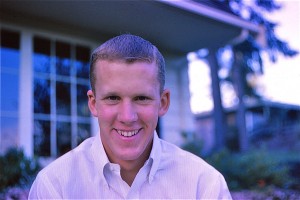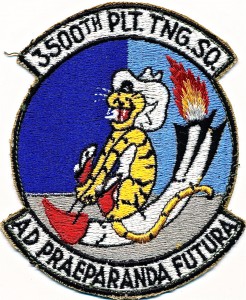 On 15 November, 1964, I climb out of my Corvair in front of a long, two-story barracks-style building at Reese AFB, Texas, that looks exactly like the other buildings lined up on either side of it. All of the Undergraduate Pilot Training (UPT) students live in these quarters, and room assignments group the incoming members of Class 66-D together.
On 15 November, 1964, I climb out of my Corvair in front of a long, two-story barracks-style building at Reese AFB, Texas, that looks exactly like the other buildings lined up on either side of it. All of the Undergraduate Pilot Training (UPT) students live in these quarters, and room assignments group the incoming members of Class 66-D together.
Some of my ROTC classmates undoubtedly have identical report dates, so I haul my A-4 bag up the stairs to the second floor looking for a familiar face. All I see are strangers arriving in cars, standing in open doorways, or otherwise milling about until my best friend from ROTC appears around a corner.
I think we were both relieved, and we quickly agree to share quarters, consisting of a living area with separate bedrooms on either side. Before long, we’re introducing ourselves to our UPT classmates. It’s not a typical meet and greet, because beneath the handshaking and initial posturing runs a current of competition.
Few of us know exactly how it works, but we’re all well aware of the importance of class standing in determining our first assignment after graduation. We haven’t yet attended a single academic class or flown our first training flight, and already we’re in the mode that will rule our lives for the next year.
Personal performance is all that matters. I will be judged, and I will judge others. Will I be able to stand proud among my peers? The atmosphere at this moment is only the beginning of an intense experience that will answer this question for the first of many times in my Air Force career.
Within a month or so, we know that toward the end of our undergraduate pilot training course, the cockpit assignments available (aircraft type and where based) will be published. Each student will then fill out a “dream sheet” to arrange the choices in order of preference. Once class standing is finalized based upon the combination of academic and flying grades, the process begins.
 In 1964 there are seven USAF UPT locations, and Reese is not the only base at which students of Class 66-D are in training. But with no way to compare the relative performance of students at different locations, we are in direct competition only with other students at our base. This means there will be more than one student at each rank-order position, and the only fair way to determine who gets to choose first is to begin with the element of chance.
In 1964 there are seven USAF UPT locations, and Reese is not the only base at which students of Class 66-D are in training. But with no way to compare the relative performance of students at different locations, we are in direct competition only with other students at our base. This means there will be more than one student at each rank-order position, and the only fair way to determine who gets to choose first is to begin with the element of chance.
The top student at each location will be placed in a group and “picked out of a hat” in random order to be awarded their first dream-sheet choices. That order will be repeated for the second-place finishers, etc., until all the students in Class 66-D have received their assignments.
If every student fills out identical dream sheets, predicting the next assignment won’t be all that difficult. But we won’t, of course, and for those not near the top of the class, the big question is, “What will be left when they finally get to me?”
Graduates of Class 66-D will receive their assignments in the fall of 1965. The Cold War dominates America’s military strategy, but our involvement in Vietnam is heating up. By this point in training, students will be able to make an informed guess about how many classmates want a tactical fighter, fighter-interceptor, strategic bomber, air-refueling tanker, cargo/airlift, or a “retread” assignment as a UPT instructor.
I will be in competition only with those UPT classmates who want to fly fighters. With no way to predict the total number of fighter assignments that will be available to our class, I can only do my best in academics and flying and hope to be competitive when the time comes to learn what my future holds in store. For the next year, I will live in an atmosphere of constant pressure to be better than the next guy.
Welcome to the world of military aviation.


